👶Lámpara de Fototerapia🏥 / 👶Phototherapy Lamp🏥
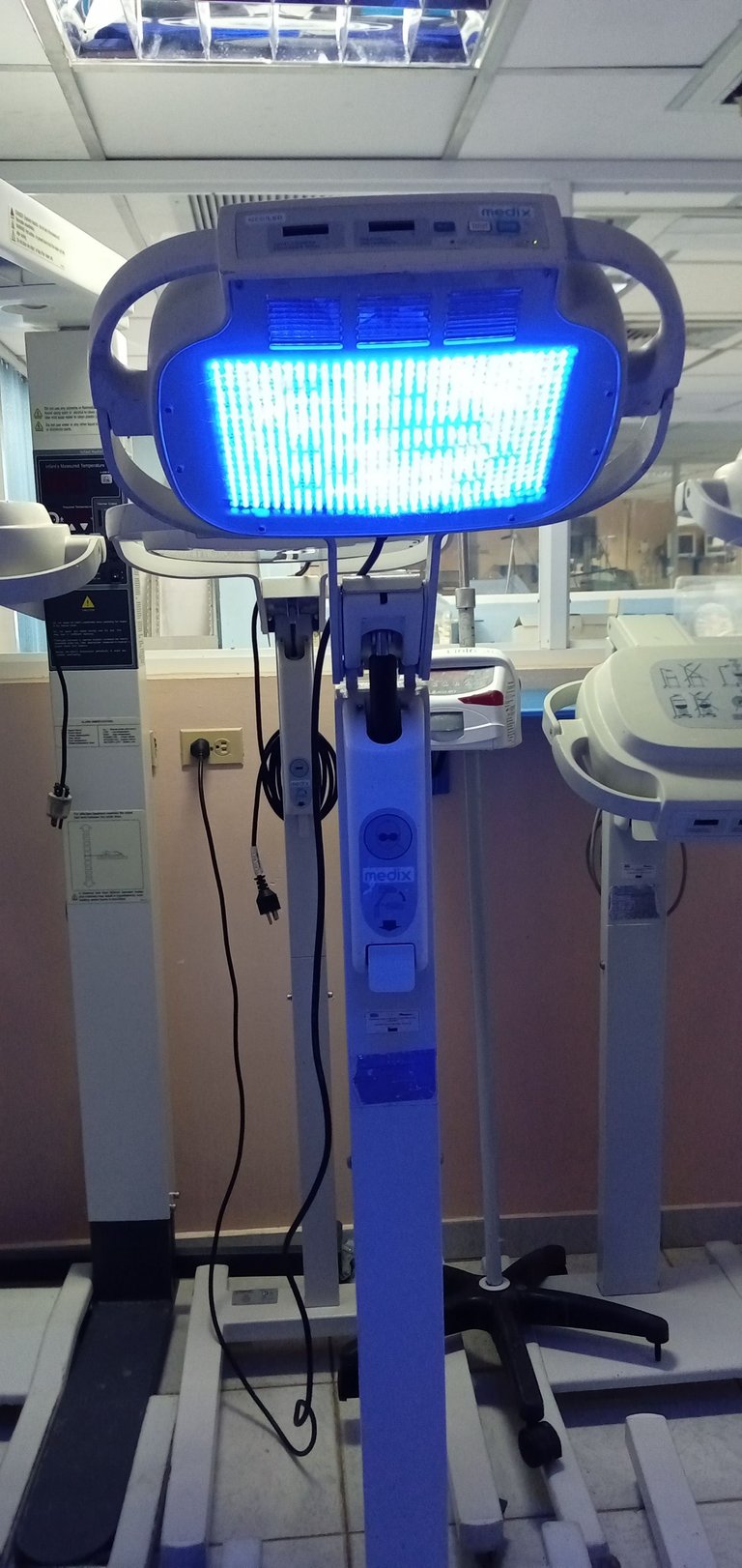
👶Lámpara de Fototerapia🏥
👶Phototherapy Lamp🏥
Muy buenas mis apreciados lectores de la colmena, alguno de ustedes ¿sabe lo que es la fototerapia?, ¿Para que se aplica la fototerapia? y ¿Que equipo realiza este trabajo?. hoy les contare sobre este equipo y unos datos adicionales.
Very good morning my dear readers of the hive, do any of you do you know what phototherapy is?, **What is phototherapy used for? and **What equipment does this work? **. Today I will tell you about this equipment and some additional information.
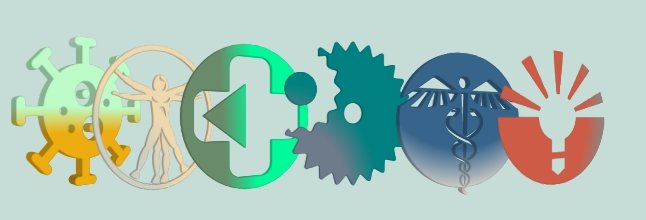
La fototerapia es el tratamiento de una enfermedad mediante ciertos tipos de luz. Para la fototerapia, se pueden usar lámparas de luz láser, lámparas LED, lámparas fluorescentes o radiación ultravioleta o infrarroja. También se llama terapia de luz.
Phototherapy is the treatment of a disease using certain types of light. For phototherapy, laser light lamps, LED lamps, fluorescent lamps or ultraviolet or infrared radiation may be used. It is also called light therapy.
En la fototerapia, la piel se expone a una fuente de luz durante un tiempo determinado para tratar ciertas condiciones de la piel. Por otro lado la fototerapia se emplea para tratar el trastorno afectivo estacional y algunas otras enfermedades mediante la exposición a la luz artificial.
In phototherapy, the skin is exposed to a light source for a certain amount of time to treat certain skin conditions. Phototherapy, on the other hand, is used to treat seasonal affective disorder and some other illnesses through exposure to artificial light.
Trastornos a las que se aplica
Disorders to which it applies
| Neonatos | Trastornos de la Piel |
|---|---|
| Hiperbilirrubinemia | condición clínica presente en los recién nacidos caracterizada por una coloración amarilla de la piel y ojos (ictericia) debida a la alta concentración de bilirrubina en sangre, que no ha podido ser procesada por el hígado del recién nacido, el incremento de los niveles de la bilirrubina arriba de los 5 mg/dL en sangre, se considera uno de los principales síntomas. |
| Adultos y Niños | Trastornos de la Piel |
|---|---|
| Dermatitis | afecciones de la piel debido a algún tipo de inflamación de esta. |
| Dermatitis atópica | eczema (afección que se caracteriza por enrojecimiento y picazón de la piel) o dermatitis a causa de alergias. |
| Dermatitis seborreica | afección de la piel en la cual se produce descamación que suele afectar el cuero cabelludo. |
| Micosis fungoide (linfoma de células T cutáneo) | un tipo de linfoma que se desarrolla en la piel. |
| Vitiligo | un trastorno de la piel en el que se pierde la pigmentación normal de esta debido a la destrucción de las células productoras de la pigmentación por parte del sistema inmunitario. |
| Comezón o prurito | Comezón o prurito: resultado de una enfermedad hepática o renal. |
| Psoriasis | es una enfermedad de la piel que causa manchas rojas y escamosas que pican, sobre todo en las rodillas, los codos, el tronco y el cuero cabelludo. |
| Newborns | Skin disorders |
|---|---|
| Hyperbilirubinaemia | clinical condition present in newborns characterised by yellowing of the skin and eyes (jaundice) due to high bilirubin concentration in the blood, which has not been processed by the newborn's liver, increased bilirubin levels above 5 mg/dL in the blood, is considered one of the main symptoms. |
| Adults & Children | Skin disorders |
|---|---|
| Dermatitis | skin conditions due to inflammation of the skin. |
| Atopic dermatitis | eczema (a condition characterised by redness and itching of the skin) or dermatitis due to allergies. |
| Seborrhoeic dermatitis | a skin condition in which flaking occurs, usually affecting the scalp. |
| Mycosis fungoides (cutaneous T-cell lymphoma) | a type of lymphoma that develops in the skin. |
| Vitiligo | a skin disorder in which normal skin pigmentation is lost due to the destruction of pigment-producing cells by the immune system. |
| Itching or itching. | Itching or pruritus: the result of liver or kidney disease. |
| Psoriasis | is a skin disease that causes red, scaly, itchy patches, especially on the knees, elbows, trunk and scalp. |
Otros trastornos a los que se aplica son: Trastorno afectivo estacional, Tipos de depresión que no surgen de acuerdo con la estación del año, Desfase horario, Trastornos del sueño, Adaptación a un horario laboral nocturno
Other disorders to which it applies are: Seasonal Affective Disorder, Non-seasonal types of depression, Jet lag, Sleep Disorders, Adjustment to night work schedule

Unidades de Fototerapia
Phototherapy Units
Las unidades de fototerapia son dispositivos que emiten luz, con longitud de onda entre 310 y 700 nm aproximadamente, según sea el tipo de lampara y el área destinada; en neonatología el rango de longitud de ondas van desde los 420nm a 500nm; en el tratamiento del vitiligo las lamparas están destinadas a trabajar desde los 310nm a 400nm; para la terapias de la piel desde los 350nm a 400nm y en las terapias de trastornos mentales desde los 300nm a 400nm. Para que puedan entender lo de las longitudes de ondas, se lo describiré de la siguiente manera:
The phototherapy units are devices that emit light, with wavelengths between 310nm and 700 nm approximately, depending on the type of lamp and the intended area; in neonatology the wavelength range is from 420nm to 500nm; in the treatment of vitiligo the lamps are intended to work from 310nm to 400nm; for skin therapies from 350nm to 400nm and in the therapies of mental disorders from 300nm to 400nm. In order for you to understand the wavelengths, I will describe them as follows:
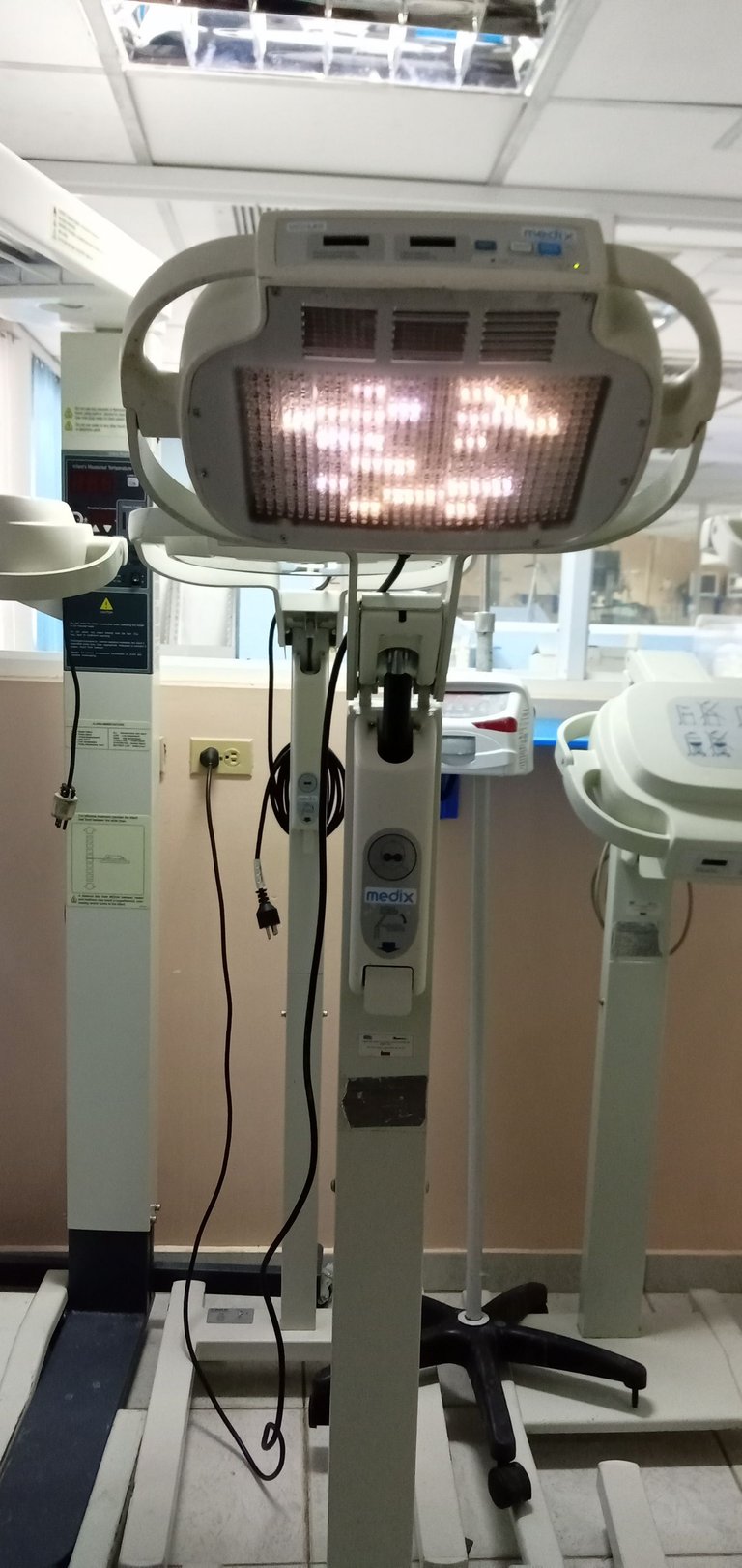
La zona del espectro de 4000 - 7000 Å es la de la luz visible. Por encima de los 7000 Å están los infrarrojos y por debajo de los 4000 Å los ultravioletas:
The area of the spectrum from 4000 - 7000 Å is that of visible light. Above 7000 Å are the infrared and below 4000 Å are the ultraviolet:
UVA: 3200 - 4000 Å / UVB: 2800 - 3200 Å / UVC: 150 - 2800 Å
UVA: 3200 - 4000 Å / UVB: 2800 - 3200 Å / UVC: 150 - 2800 Å
- Radiación infrarroja: se utiliza fundamentalmente como agente termoterápico mediante la cámara de infrarrojos. Esta no se ve, sólo da calor. Cuando se aplica calor mediante la lámpara, hay que colocarla para que aplique la radiación, pero de modo que la persona no esté en posición vertical a la lámpara. Se utiliza por su efecto termoterápico.
- Infrared radiation: This is mainly used as a thermotherapy agent by means of the infrared camera. This cannot be seen, it only gives heat. When heat is applied by means of the lamp, it must be positioned so that it applies the radiation, but in such a way that the person is not in a vertical position to the lamp. It is used for its thermotherapy effect.
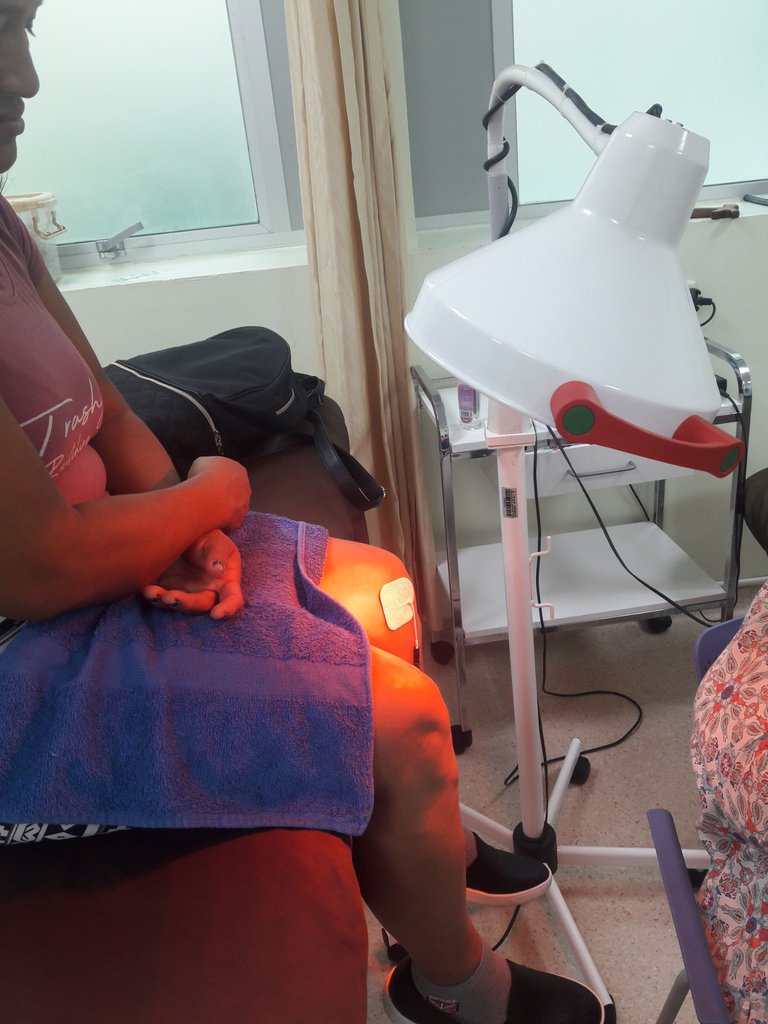
- Rayos ultravioletas: tienen efectos terapéuticos y biológicos sobre el organismo, pero también efectos nocivos en exceso, en especial cuanto más corta es la onda ultravioleta (lejana al violeta e invisible) porque más se acercan a los rayos X.
- Ultraviolet rays: they have therapeutic and biological effects on the organism, but also harmful effects in excess, especially the shorter the ultraviolet wave (far from violet and invisible) because they are closer to X-rays.
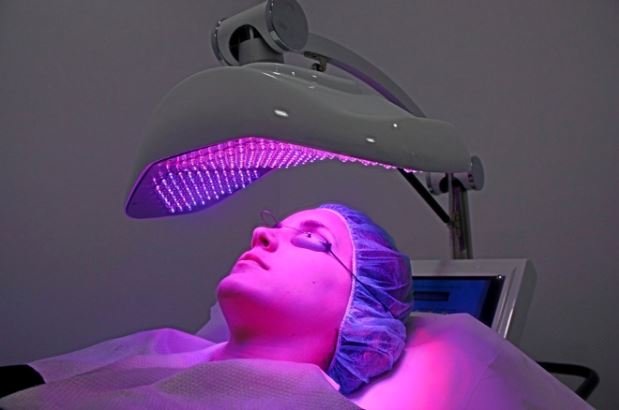
- Láser: es una luz especial artificial. Se requiere una luz más un compuesto químico (sólido, líquido o gaseoso). La luz estimula al compuesto químico aumentando su energía. Esta energía cae, y es entonces cuando se ve a la luz, saliendo una luz mucho más potente (de un solo color: blanco, rojo, infrarrojo, verde), coherente, con capacidad incluso de cortar tejidos.
- Laser: is a special artificial light. It requires a light plus a chemical compound (solid, liquid or gas). The light stimulates the chemical compound by increasing its energy. This energy drops, and it is then that the light is seen, producing a much more powerful light (of a single colour: white, red, infrared, green), coherent, even capable of cutting tissue.
Distancia de la luz al paciente
Distance of light to the patient
La distancia de la fototerapia intensiva de led, alógena y convencional es decir fluorescentes, tienen que ser de 10 a 15 cm pero la no intensiva se recomienda que sea de 20 a 30 o 50 cm dependiendo de la intensidad.
The distance of intensive LED, halogen and conventional light therapy, i.e. fluorescent, should be 10 to 15 cm, but non-intensive light therapy is recommended to be 20 to 30 or 50 cm depending on the intensity.
Tiempo de exposición a la luz. Una sesión típica de fototerapia de baja intensidad consiste en tres días de tratamiento continuo para prematuros y de uno a dos días para neonatos a término. Mas sin embargo no se puede aplicar sobre los ojos ya que se producirían lesiones reversibles, excepto en las indicaciones terapéuticas. Tampoco se aplicaría en embarazos ni en cáncer ya que tiene efectos patógenos.
Light exposure time. A typical session of low-intensity phototherapy consists of three days of continuous treatment for premature infants and one to two days for term neonates. However, it cannot be applied to the eyes as reversible lesions would occur, except for therapeutic indications. It should also not be applied in pregnancy and cancer as it has pathogenic effects.

Espero que les haya gustado este post, no olvidés votar, compartir y seguirme para estar al día de toda la nueva información que subo sobre equipamiento médico.
I hope you liked this post, don't forget to vote, share and follow me to keep up to date with all the new information I upload about medical equipment.
Este contenido es de mi autoría.
Las imágenes utilizadas en este contenido tienen sus enlaces de referencia para los que son de otros autores y mis imágenes son hechas por mi autoría con un smartphone Alcatel 1s-2020.
This Content is of my Authorship.
The images used in this content have their reference links for those that are from other authors and my images are made by my authorship with a smartphone Alcatel 1s-2020.
Enlaces de Interes / Links of Interest
https://es.wikipedia.org/wiki/Fototerapia
https://www.mayoclinic.org/es-es/tests-procedures/light-therapy/about/pac-20384604
https://www.pardell.es/fototerapia.html
Excelente post, la protección ocular y genital es esencial durante la fototerapia, saludos 😄🙌🏽
Tienes toda la razón, muchas gracias 🤗
https://twitter.com/josdad_01/status/1465837668839923718
The rewards earned on this comment will go directly to the person sharing the post on Twitter as long as they are registered with @poshtoken. Sign up at https://hiveposh.com.
Excelente artículo amigo. Hoy aprendí algo nuevo.
Muchas gracias 🤗
Está publicación es digna de esta plataforma. Enhorabuena amigo.
Muchísimas gracias 👍🏽
Su post ha sido valorado por @ramonycajal